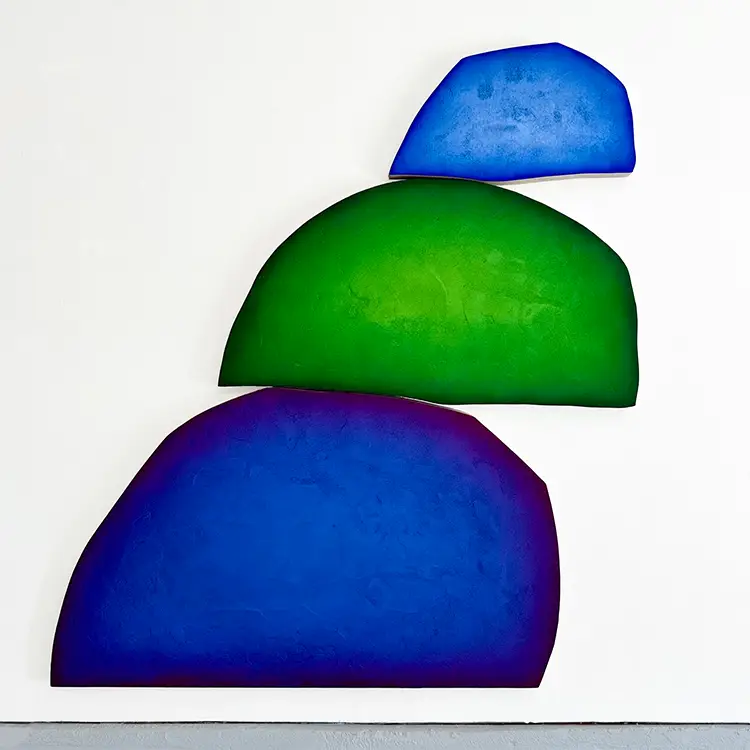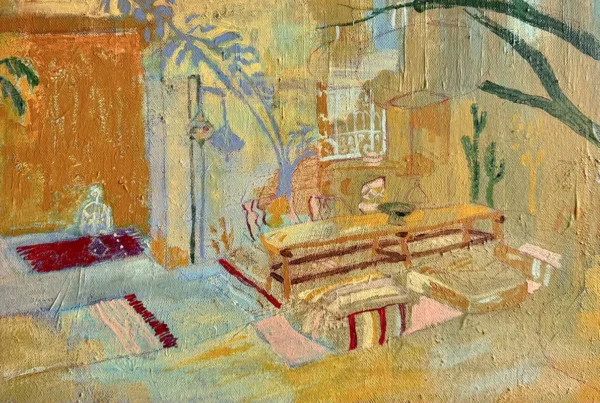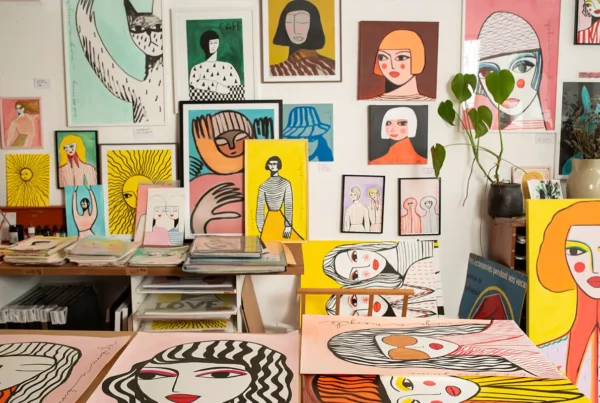Rediscovering Purpose in the Silence
In a world that often equates creative success with early momentum, Jonathan Todryk’s story stands as a quiet defiance. Born in Minneapolis on July 14, 1984, Todryk’s early life brimmed with artistic energy. He found joy in the rhythm of musical instruments and the freedom of sketching lines across paper. From childhood, art wasn’t something he merely practiced—it was the language through which he connected to the world. Yet, unlike many whose paths unfold with linear certainty, his journey wove through unexpected silence and detours, shaping an artistic voice that would eventually emerge with raw conviction.
During his teenage years, Todryk’s passion for the arts deepened. Though visual art held a strong appeal, music gradually became the central focus. Joining a worship band in high school set the stage for a decade-long engagement with music, a period marked by spiritual expression, communal connection, and travel. These performances, often hosted in churches and camps, carried him beyond state borders and even into Montreal, where he met his wife. Music wasn’t merely a creative pursuit; it was an anchor for identity and a vessel for emotional and spiritual resonance.
That chapter, however, gave way to a season that felt dissonant. After marriage and a move to Illinois, Todryk found himself settling into the rhythms of family life and a conventional job. The once vital creative expression began to recede, and with it came a quiet despair. The absence of artistic outlets ushered in a deep internal questioning. Detached from his former passions, he grappled with depression and a sense of lost purpose. In the stillness of that struggle, however, the groundwork for a profound transformation was being laid—one that would eventually reshape not only his career but his entire sense of calling.
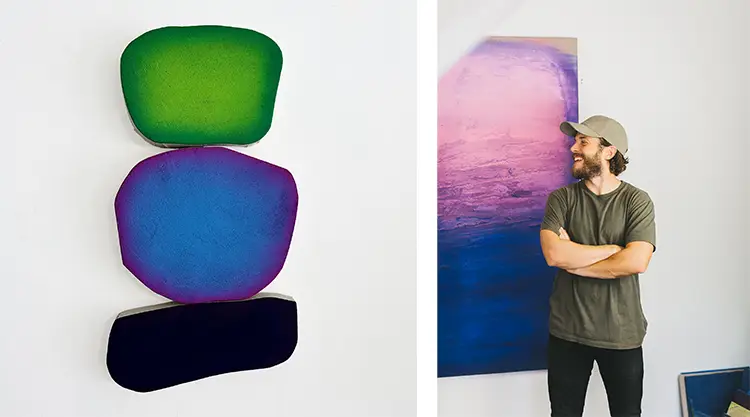
Jonathan Todryk: From Garage Canvas to Sacred Calling
Everything began to shift with an unexpected gesture—a small box of paints handed down from his father. With no clear direction but a desire for relief, Todryk turned to those paints as a simple post-work hobby, retreating to his garage after his children were asleep. What started as a coping mechanism gradually became something much more than a distraction. The hours spent layering color became sacred, slowly reawakening his creative identity. What felt dormant for years sparked to life again, not in a moment of grand revelation, but in the quiet act of returning to what had always been part of him.
As he leaned further into this rediscovery, Todryk began to sense that painting was more than a form of escapism—it was a calling rooted in divine design. Creativity, he came to believe, wasn’t a luxury or indulgence but a spiritual mandate, a gift from God that needed to be expressed. That realization transformed his garage sessions into something transcendent. He wasn’t simply creating for personal release; he was communing with God, using art as a conduit for spiritual reflection and intimacy. In that process, he reclaimed not only his role as an artist but his understanding of himself as someone created to create.
This spiritual framework continues to shape his work in profound ways. Todryk sees every brushstroke as a reflection of the gospel’s core message: restoration, persistence, and unyielding hope. His pieces speak to the belief that nothing and no one is beyond renewal. Even the seemingly incomplete or chaotic works carry a thread of potential—mirroring how God sees humanity. That philosophy informs his refusal to discard any canvas; instead, he continues to work with each one until its voice emerges. For Todryk, faith and art are inseparable—they both speak to the pursuit of redemption through patience and vision.

Layers That Refuse to Flatten
Todryk’s current body of work is celebrated for its arresting interplay between surface and substance. What sets it apart is not only its emotional depth but its literal physicality—paintings that move beyond the canvas and invite touch as much as gaze. This evolution in his style grew from his impulse to challenge the flatness of traditional painting. Initially experimenting with various natural and industrial materials, he sought a tactile intensity that would give his work presence. It wasn’t until he discovered an acrylic-based concrete that his artistic intentions fully aligned with material possibility.
This unusual medium unlocked a dimensionality Todryk had long been chasing. Unlike conventional paints that sit obediently on a canvas, the concrete-based texture allowed him to sculpt his surfaces, adding mass and motion to his compositions. It granted his work a kind of kinetic stillness—a sense of suspended movement within fixed forms. The departure from the white backdrop of typical painting was more than aesthetic; it symbolized his desire to create something that felt alive, weighted, and unafraid of imperfection. In these pieces, material and message are deeply intertwined, each layer suggesting something beneath it, waiting to be uncovered.
Despite their sculptural boldness, Todryk’s works retain an intimate, almost meditative quality. Each composition unfolds at its own pace. Some emerge quickly, with fluid certainty, while others demand patience and endurance. There are works that have lingered on his studio wall for years, evolving slowly until their final form reveals itself. This openness to process, and his commitment to never discarding a piece, underscores his central belief: every canvas carries a hidden promise. Just as faith sees beyond the present into possibility, his artistic process leans into the unseen, drawing beauty out of ambiguity.
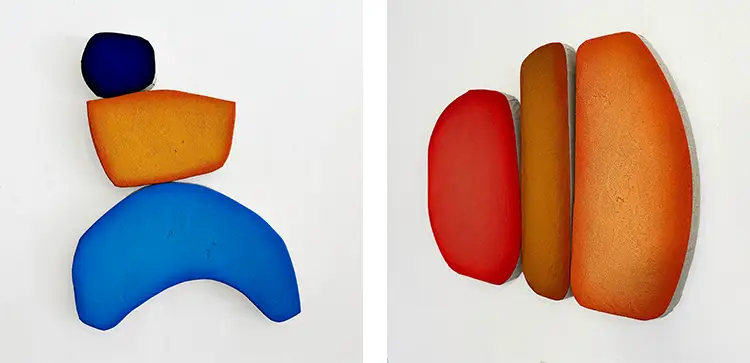
Jonathan Todryk: The Weight of Hope Made Visible
Todryk’s decision to pursue art full-time marked the beginning of a new chapter—one grounded in both creative conviction and spiritual trust. For years, he balanced his artistic pursuits with external responsibilities, cautiously protecting his creativity while managing everyday demands. Eventually, however, the internal call grew too strong to ignore. Stepping fully into the life of a professional artist wasn’t simply a career move; it was an act of surrender, a statement of faith in his purpose and in the One who gave it to him. That leap reshaped not only his schedule but his capacity to dream without constraint.
With this newfound freedom, Todryk’s art began to reach broader audiences and deeper emotional depths. His pieces are no longer confined to personal catharsis; they have become conduits for collective healing. He creates with the hope that his work might stir something in those who encounter it—a sense of being known, valued, and not beyond restoration. The themes of his journey—loss, rediscovery, spiritual intimacy—echo in every textured surface, inviting viewers to see their own narratives reflected in the fractures and forms. In this way, his work functions not as decoration but as conversation.
What Todryk ultimately offers through his art is a kind of visual liturgy—a silent invitation to engage with deeper truths. Each piece stands as a testament to resilience, the slow beauty of process, and the possibility of renewal. Whether viewers are people of faith or simply seekers of meaning, his work offers a quiet assurance: there is purpose in every layer, even the broken ones. Through the sculpted weight of paint and concrete, Todryk turns hope into something you can almost touch.
